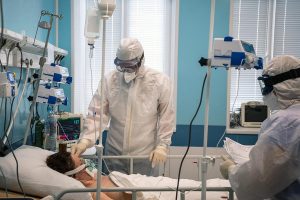
The first step in treating vertigo is understanding its cause. Many conditions can trigger vertigo an expert says. Middle ear fluid, dislodged crystals in the inner ear, Meniere’s disease, vestibular neuritis and vestibular migraine all can cause vertigo, according to Dr. Mina Le. She is an otolaryngologist-head and neck surgeon with Mountainside Medical Group in New Jersey. “If your vertigo is from middle ear fluid, you likely have trouble hearing and it may sound like you’re underwater,” Le said in a news release from Hackensack Meridian Health. “You may have pain or pressure in the affected ear,” she continued. “The problem commonly begins after a head cold. A physician can look at your eardrum to confirm this diagnosis. You will get antibiotics if it’s an acute infection, and decongestants and nasal balloon therapy if it’s chronic.” Short bouts of dizziness may be due to benign paroxysmal positional vertigo (BPPV). “If your vertigo only lasts for a few seconds at a time, and if it is brought on by turning your head or rolling over in bed, you most likely have BPPV, in which the crystals in your inner ear are dislodged,” Le said. “A physician can confirm this diagnosis with a Dix-Hallpike test.” If you have BPPV, you will be treated with a method called the Epley maneuver, in which the head is turned from… read on > read on >





























-300x200.jpg)







-300x169.jpg)
